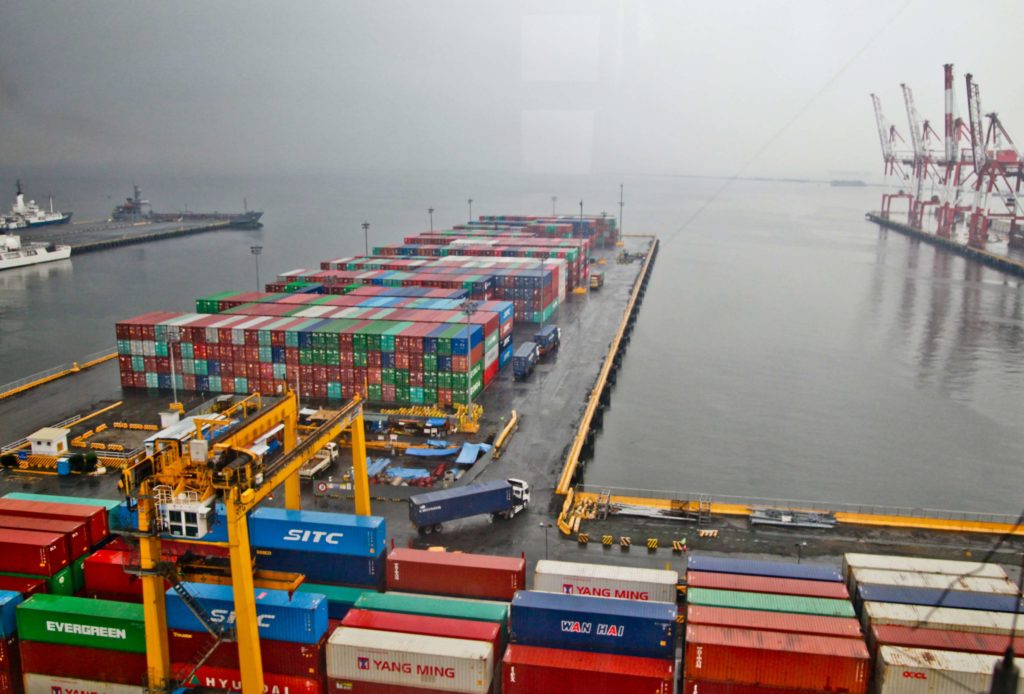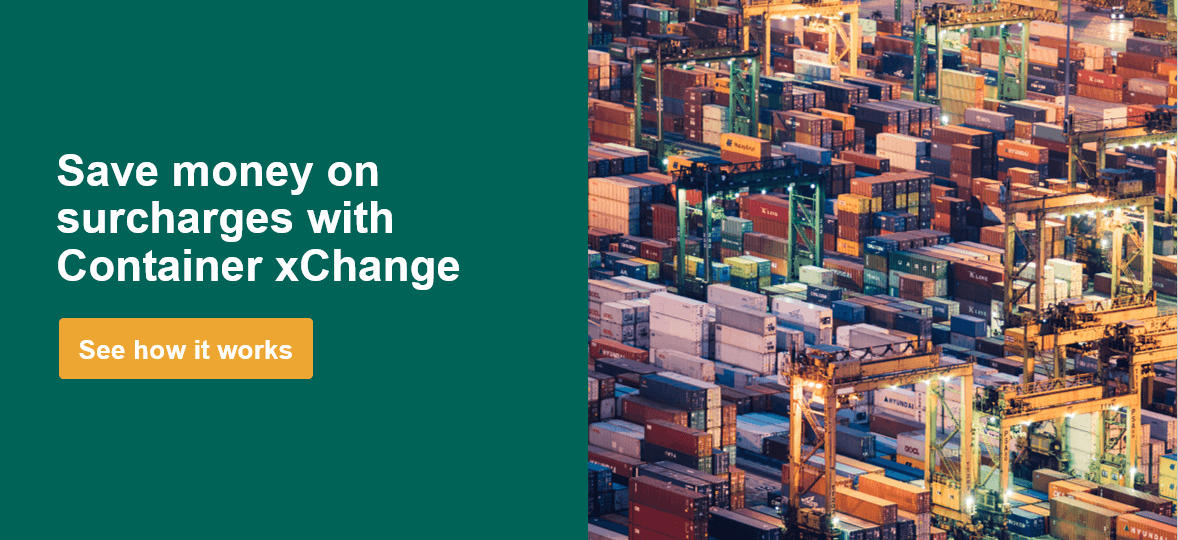Want to know how to sidestep port congestion surcharges? These five tips can help you reduce or avoid these extra fees.
The shipping industry has grown tremendously over the last decade. But the port capacity at major locations has pretty much stayed the same even though the demand has increased. This also means, that many shipping ports have heavy traffic – and vessels wait in queue for a long time. Giving rise to port congestion. A major concern for shippers and freight forwarders globally.
It’s become worse due to strict COVID-19 restrictions at the terminals which further aggravates this infrastructure bottleneck. At the Chinese ports, the average waiting time can go up to 2-3 days, with each day amounting to thousands of dollars in loss.
Port congestion can have a drastic economic impact on shippers if not regulated. And a major credit goes to the port congestion surcharge. Read on to know:
- What is port congestion surcharge (PCS)?
- How is port congestion surcharge calculated?
- Ways to reduce port congestion surcharge
What is port congestion surcharge?
Unexpected delays call for additional shipping costs and surcharges for all stakeholders, including delay costs, demurrage and detention, and other surcharges depending on the situation.
Now, many times, the vessel cannot unload the cargo due to traffic at the port or the non-availability of the quay. Cargo owners have to pay a fee to the shipping lines, even when the vessels are waiting at the ports. This can include maintenance and fuel costs along with other operational costs. This additional cost is called Port Congestion Surcharge (PCS).
Carrier companies claim that the surcharge can be dependent on unforeseeable events like labor unrest, bad weather, or port fires. Container owners often have to bear the losses because of these additional costs like PCS along with other additional surcharges due to delays.
Want to avoid worrying about extra surcharges? With Container xChange you save costs on charges like demurrage and detention. You can also stop fretting about the status of your containers with real-time updates on xChange. Want to learn more about xChange and how we can help you save money on surcharges and time? Click on the banner below and schedule a call with our team.
How is port congestion surcharges calculated?
There isn’t any standardized way to calculate the port congestion surcharge. It lies solely at the discretion of the shipping lines. Usually, the surcharge is calculated as a percentage of the cargo or a percentage of one TEU.
November 2020, CMA CGM announced a congestion surcharge on all its fleets originating from Asia to major UK ports. The cargo owners will have to pay USD 150 per TEU until further notice from the carrier.
The surcharge can go up to USD 1,250 per container charged on the consignee’s account at major ports in China (where congestion is an even bigger issue). It presents a picture of the economic impact of port congestion on container owners across the globe. Not only does it disrupt business and thus, the prospect of further profits — but also eats into the existing finances of the shippers.

How to reduce or avoid port congestion surcharge?
Many in the industry argue that the three leading shipping alliances (2M, THE Alliance, and Ocean Alliance) virtually control 85% of the market share. Even though the Federal Maritime Commission (FMC) has enforced stricter regulations on shipping lines, it’s still hard for container owners to negotiate.
It creates a need for alternative options to reduce or avoid port congestion surcharges. Most of them are linked to reducing the risk of port congestion at major shipping locations by adopting preventive measures. It includes port expansion, developing infrastructure, better labor work conditions, and digitalization of port operations.
But efforts aimed at reducing port congestion would bear fruit over long(er) periods. For immediate relief, cargo owners need effective, actionable solutions they can implement in the shorter run to avoid these charges. Some of them include:
Transportation demand planning
You can pre-plan your company’s global carriage activity to avoid or reduce any duplication or inefficiency. This can be done by profiling your global carriage across various transport modes and business units. It reduces your dependence on one carrier and thus, the burden of loss in case of any unusual event.
Better forecasts
If you can predict the delivery time, port conditions, and status of your global fleet accurately, the faster you can make decisions for damage control. Cutting-edge technology like xChange can help you make accurate carriage forecasts in time.
Influencing terminal operations
Container owners can balance their supply and reduce the time in queues by keeping an eye on terminal operations at the port. This can be achieved by negotiating with shipping lines that usually have good contacts with terminal operators.
Virtual real-time warehousing
A virtual warehouse gives you a real-time picture of the global logistic assets like transport or inventories. Thus, you can manage the inventory-in-motion by keeping a close vigil on the supply and demand at the origin and destination during inland transit. xChange dashboards give you real-time data on all your global fleets in place to facilitate planning.
Container Tracking
Container tracking helps you take timely decisions in case of delay and plan re-routes or transportation accordingly. You can predict when your container is stuck at the port, for how long, and how you can redistribute the cargo and containers.
How to dodge the surcharges
You’ve probably struggled with containers stuck in the terminals for an infinitely long time. Port congestion. Shortage of chassisWhat is a chassis? Chassis, in freight & logistics, refers to a skeleton framework with wheels on it used to move containers. It is also called intermodal chassis or container chassis. Similar to ... More. And so the list continues. It can be difficult to avoid port congestion surcharges, but staying on top of your shipments is key to making changes ahead of time.
With Container xChange you have all the information about your shipments readily available at all times. You can check the status of the shipments through detailed track and trace reports – and get notifications when there’s a container event such as ETA’s, pick-up, and returns. This gives you the best possible overview of all your containers and lets you focus on the containers that urgently need your attention.
No need to worry about demurrage and detention
SOC containers, also known as Shipper Owned Containers, can help you get around these hidden extra fees. With SOC containers you borrow the boxes of a container owner. This saves the container owner money on storage and repositioning. In turn, giving you more free days and low per diem charges.
With SOC containers, there are no carrier owned containers. No hidden fees. No demurrage and detention charges.
Connecting global container logistics, Container xChange makes it easy for you to get started with SOC containers. On the xChange platform, you can find vetted SOC owners, who have boxes where you need them.
And to make it even easier for you to stay on top of your shipments, you can find all the information about the containers, real-time tracking, and sales or leasing offers all in one place on xChange.
Want to learn more about how Container xChange can help you save money on all these hidden fees? Click on the banner below and schedule a free call with our team.


